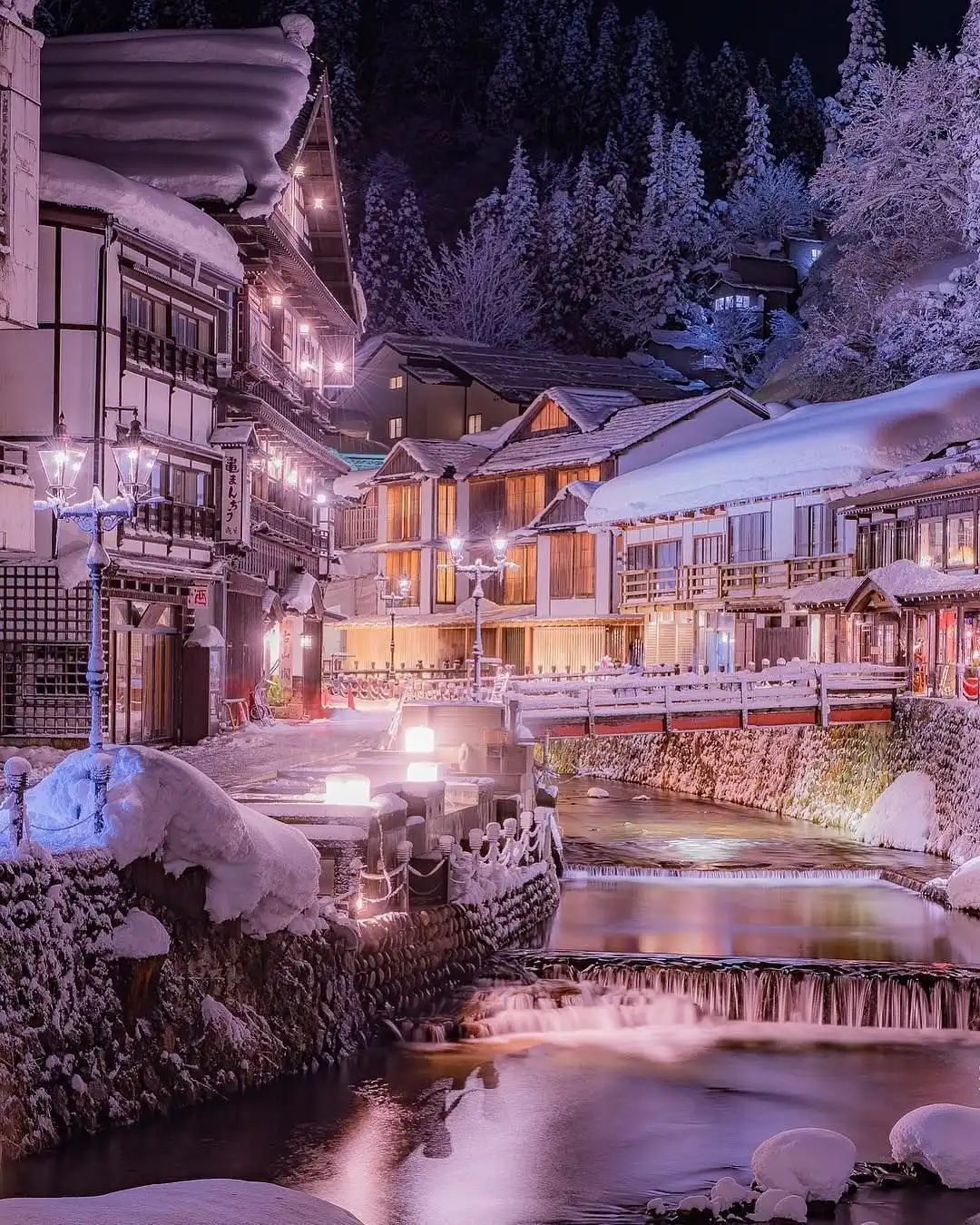
3 Days Itinerary in Yamagata, Japan - Travel Guide
An Extraordinary Journey: Three Days in Yamagata, Japan
| Days | Description |
|---|---|
| 1 | Day 1 - Discovering the Heartbeat of Yamagata |
| 2 | Day 2 - Enjoying Yamagata's Natural Beauties and Traditions |
| 3 | Day 3 - Delving Deeper into Yamagata's Cultural and Religious heritage |
Introduction
This 3-day itinerary introduces travelers to the diverse aspects of Yamagata, a city that seamlessly blends antiquity and modernity in the terrain of Japan known for its stunning landscapes, traditional Japanese architecture, and mouthwatering local cuisine.
Day 1 - Discovering the Heartbeat of Yamagata
Start your trip with a visit to the Yamagata Castle, a majestic jewel dating back to the 14th century where you can get a taste of the city's history. Don't forget your camera, as the castle, especially during cherry blossom season, is a sight to behold. Post a morning well spent in the past, immerse yourself in Yamagata's cuisine. For lunch, a bowl of Yamagata's famous ramen in one of the local restaurants comes highly recommended. Post lunch, take a leisurely walk in Kajo Park, located nearby for some refreshing air and lots of greenery. In the evening, how about a visit to the bustling Yamagata City Central Wholesale Market? It's not just a seafood lover's paradise; it offers a gamut of local delicacies for everyone. Wrap up the day with a stroll on Nanukamachi Street, where historic shop buildings offer unique shopping options.
Day 2 - Enjoying Yamagata's Natural Beauties and Traditions
Let's begin the day with the mesmerizing beauty of Mt. Zao, one of Japan's most active volcanoes and a haven for outdoor activities. In winter, it's a popular ski-resort, while in other seasons, you can enjoy hiking and hot springs. After a thrilling morning, head to the Yamagata Prefectural Art Museum for an immersion in local art. Important to note, every art enthusiast or not, don't skip the chance to experience a 'kenka jieitai' puppet show. Having worked up an appetite, why not try the 'Yonezawa beef', a local delicacy for dinner? As your day comes to an end, embrace the peaceful evening by walking along Mamigasaki River, especially lovely during sunset.
Day 3 - Delving Deeper into Yamagata's Cultural and Religious heritage
Yamadera Temple, your first stopover for the day, isn't just historical; it's an experience! Climb the thousand steps to the top, and you’ll be rewarded with panoramic views of the valley below. It's followed by lunch featuring another local specialty, imoni, a beef and taro stew, surrounded by the tranquility of the temple. Post lunch, it's time to interact with locals in the charming 'Ginzan Onsen' district, with its beautifully preserved historical buildings and hot spring baths - it`s like taking a step back in time! Finish off with dinner in one of the traditional Japanese diners, and that marks a beautiful end to your 3-day tour of Yamagata.

Victoria Scott
FAQs about this
3 day itinerary in
Yamagata
Yamagata has distinct seasons, each offering unique experiences. However, Spring (late April to early June) is considered particularly beautiful due to cherry blossom season.
Yes, you can find vegetarian meals in Yamagata. Many restaurants, especially those focusing on traditional Japanese food, offer vegetarian options. However, do mention about your dietary restrictions beforehand.
Yes, public transportation, including buses and trains, is extensively available in Yamagata. The city also boasts of an efficient taxi system. However, for more remote attractions, renting a car may be more convenient.
Other city itineraries in Japan
- Ōakashichō
- Sapporo
- Takasaki
- Toyama
- Hachinohe
- Nishitōkyō
- Bunkyō-ku
- Takatsuki
- Urayasu
- Suginami-ku
- Obihiro
- Numazu
- Kitakyūshū
- Himeji
- Kushiro
- Hadano
- Koriyama
- Sasebo
- Amagasaki
- Kurume
- Kodaira
- Kurashiki
- Toyonaka
- Kita-ku
- Shibuya-ku
- Sakai
- Shinagawa-ku
- Hirosaki
- Matsumoto
- Kōtō-ku
- Kawasaki
- Katsushika-ku
- Kishiwada
- Yokosuka
- Chūō-ku
- Nagaoka
- Ibaraki
- Isesaki
- Miyakonojō
- Ōta-ku
- Odawara
- Ōta
- Saitama
- Higashimurayama
- Jōetsu
- Tachikawa
- Ageoshimo
- Sumida
- Ichikawa
- Ōita
- Anjōmachi
- Tsu
- Aomori
- Kōchi
- Iwata
- Nerima
- Gifu
- Kumamoto
- Chiba
- Tsukuba-kenkyūgakuen-toshi
- Nishinomiya-hama
- Higashi-ōsaka
- Yokohama
- Kagoshima
- Oyama
- Akita
- Kashiwa
- Hitachi-Naka
- Edogawa
- Hitachi
- Uji
- Iwaki
- Nagasaki
- Ōtsu
- Ichihara
- Hachiōji
- Hamamatsu
- Kakogawachō-honmachi
- Yokkaichi
- Ube
- Miyazaki
- Kamakurayama
- Matsuyama
- Noda
- Arakawa
- Shizuoka
- Fuji
- Minato
- Toyokawa
- Izumo
- Yamagata
- Kōfu
- Hiratsuka
- Maebashi
- Tokorozawa
- Chigasaki
- Sōka
- Fuchū
- Hiroshima
- Ichinomiya
- Asahikawa
- Itami
- Nagareyama
- Nagoya
- Tottori
- Ōsaka
- Nishio
- Takamatsu
- Kasukabe
- Kasugai
- Ueda
- Sendai
- Adachi
- Higashi-Hiroshima
- Yato
- Kawashiri
- Daiwanishi
- Toyohashi
- Toyota
- Kumagaya
- Honchō
- Utsunomiya
- Shinozaki
- Nara
- Atsugichō
- Shinjuku
- Fukuyama
- Fukushima
- Fukuoka
- Naha
- Nagano
- Koshigaya
- Sakura
- Saga
- Kariya
- Kyōto
- Fujisawa
- Kukichūō
- Matsudo
- Tochigi
- Taitō
- Mito
- Kanazawa
- Tokyo
- Hino
- Matsue
- Chōfugaoka
- Hakodate
- Ōgaki
- Takaoka
- Niiza
- Machida
- Setagaya
- Toshima
- Tokushima
- Kawagoe
- Itabashi
- Okazaki
- Meguro
- Yamaguchi
- Kamirenjaku
- Nakano
- Matsuzaka
- Fukui
- Wakayama
- Niigata
- Suzuka
- Yachiyo
- Narashino
- Yao
- Minamisuita
- Okayama
- Sagamihara
- Kawaguchi
- Kōbe
- Morioka
- Kure
- Neya
- Takarazuka
- Tomakomai
- Hirakata
